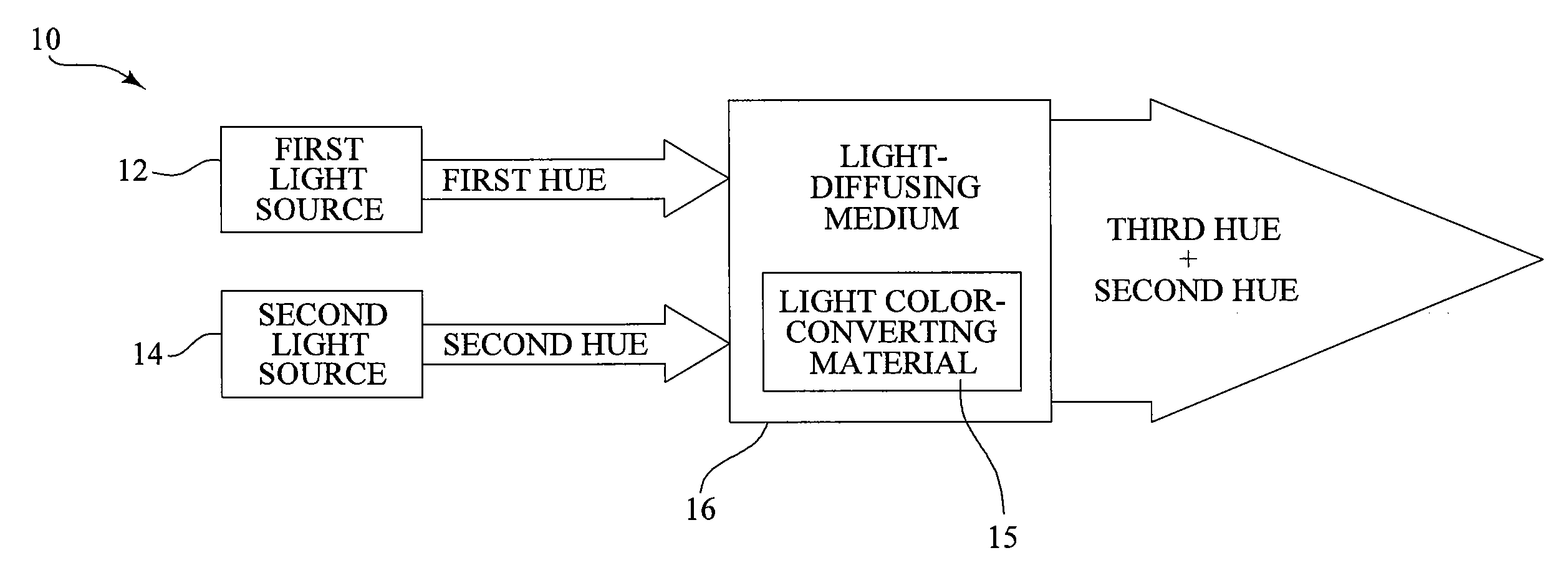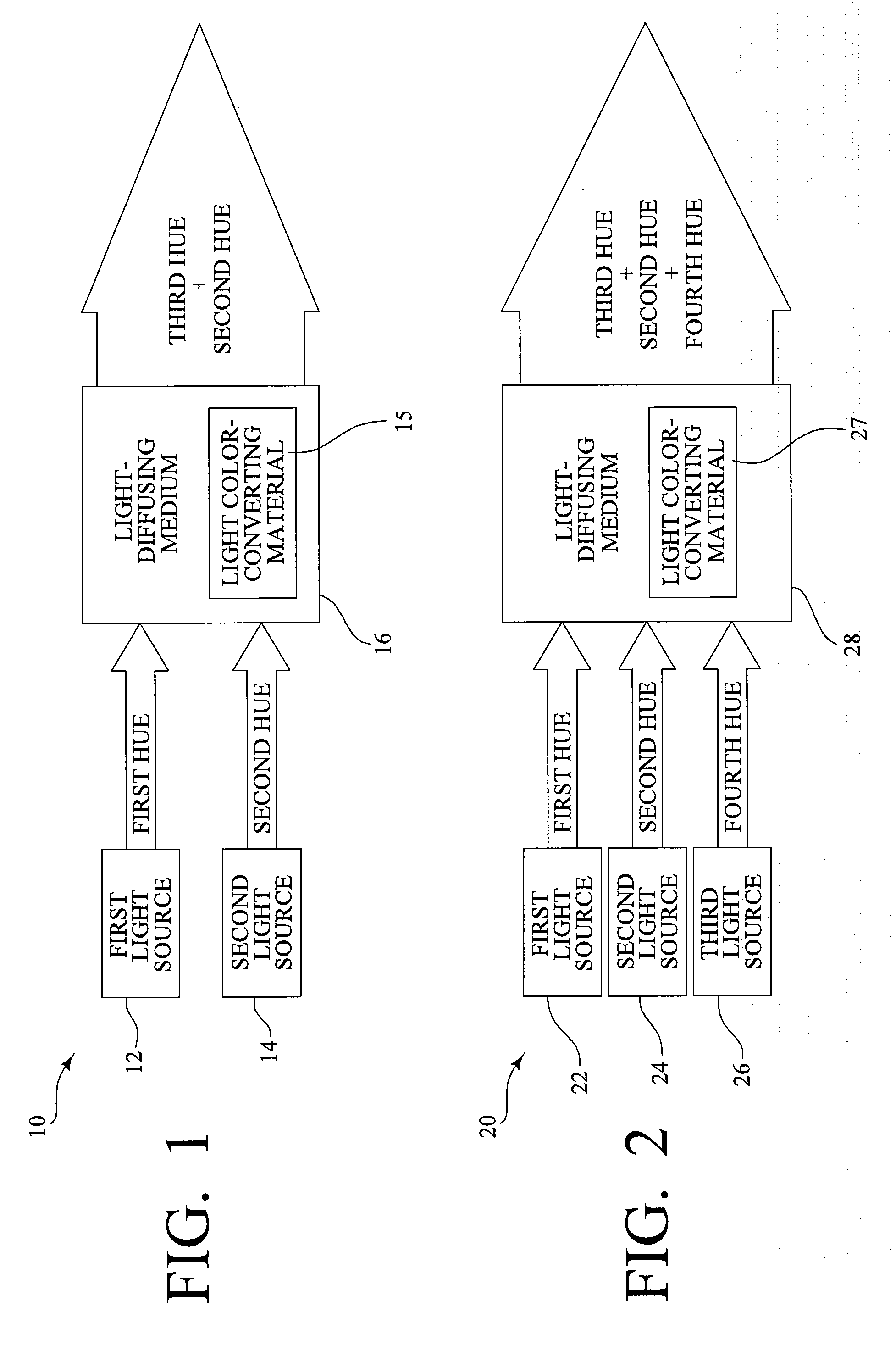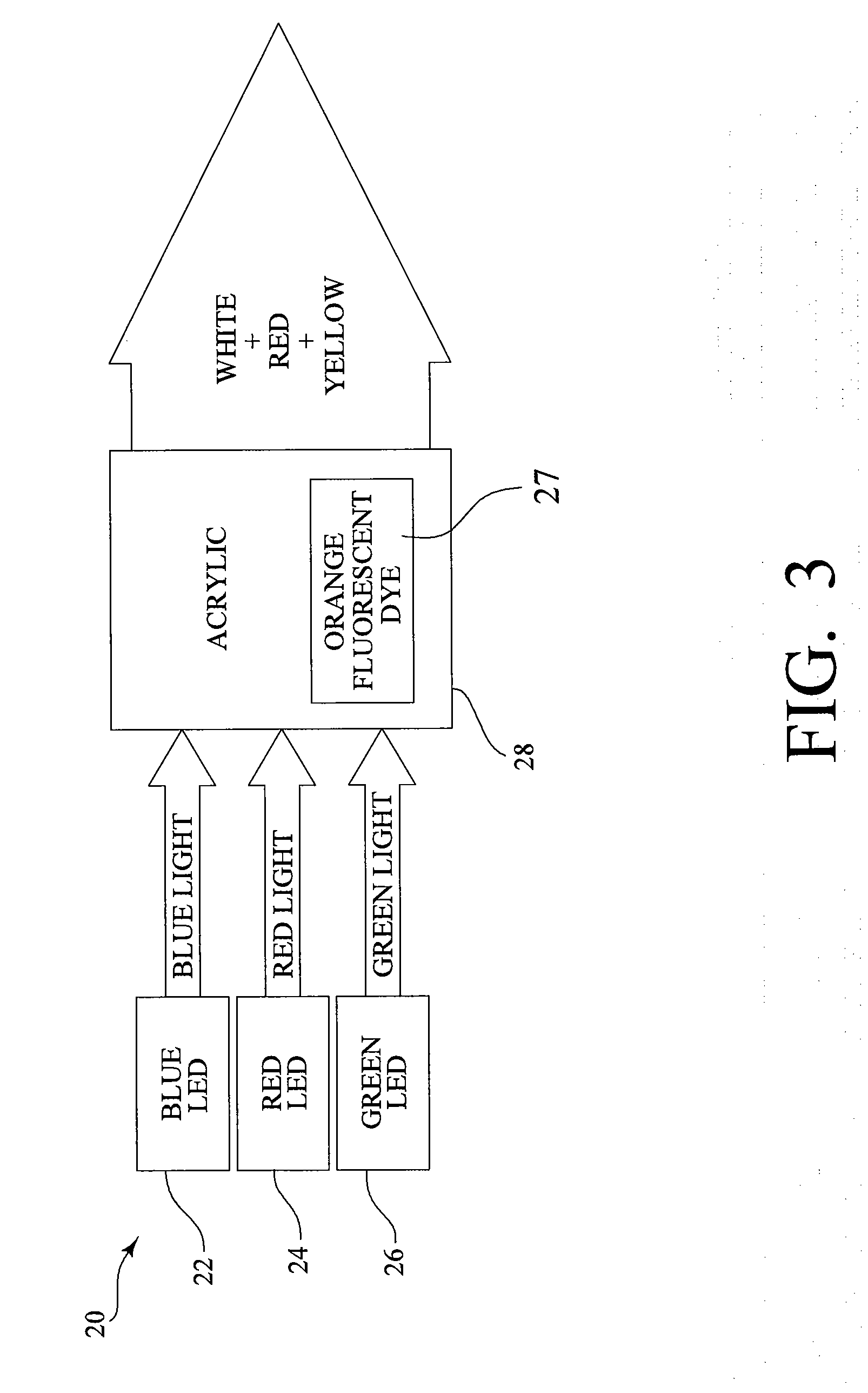Illumination device with hue transformation
a technology of illumination device and hue, which is applied in the direction of semiconductor devices, lighting and heating apparatus, instruments, etc., can solve the problems of difficult processing of such minute amounts of dye, limited visible color spectrum, and mixing of fluorescent and/or phosphorescent dyes
- Summary
- Abstract
- Description
- Claims
- Application Information
AI Technical Summary
Benefits of technology
Problems solved by technology
Method used
Image
Examples
Embodiment Construction
[0018] The present invention is an illumination device using LEDs in conjunction with fluorescent and / or phosphorescent dyes or other colorants, in which a desired hue can be achieved and finely tuned by adjusting the intensity of the LEDs.
[0019] For purposes of the discussion that follows, it is important to recognize that most perceived “colors” are not representative of light of a single wavelength, but rather some combination of wavelengths. In this regard, the dominant color in light comprised of some combination of wavelengths is generally referred to as hue. In order to provide a mechanism to represent and identify all possible perceived colors, the Commission Internationale l'Eclairage (CIE) constructed the CIE Chromaticity Diagram, which is based on three ideal primary light colors of red, blue, and green. The CIE Chromaticity Diagram is a well-known tool for identifying colors and is well understood by one of ordinary skill in the art. Specifically, since the x-axis of th...
PUM
 Login to View More
Login to View More Abstract
Description
Claims
Application Information
 Login to View More
Login to View More - R&D
- Intellectual Property
- Life Sciences
- Materials
- Tech Scout
- Unparalleled Data Quality
- Higher Quality Content
- 60% Fewer Hallucinations
Browse by: Latest US Patents, China's latest patents, Technical Efficacy Thesaurus, Application Domain, Technology Topic, Popular Technical Reports.
© 2025 PatSnap. All rights reserved.Legal|Privacy policy|Modern Slavery Act Transparency Statement|Sitemap|About US| Contact US: help@patsnap.com



